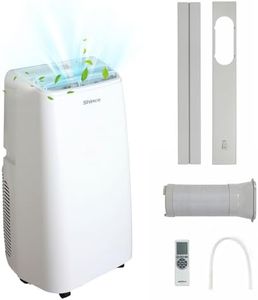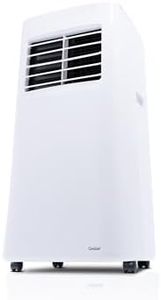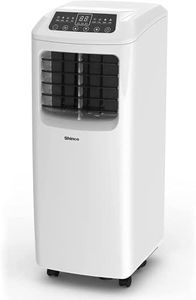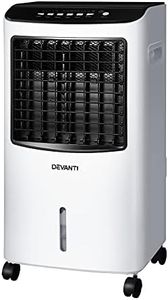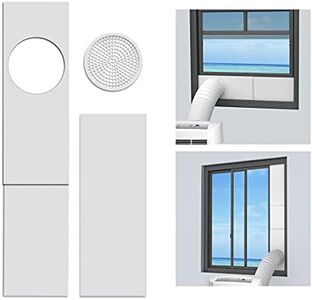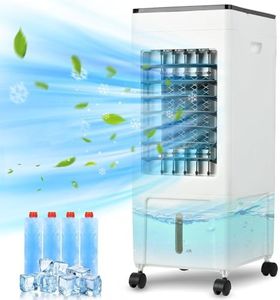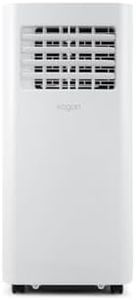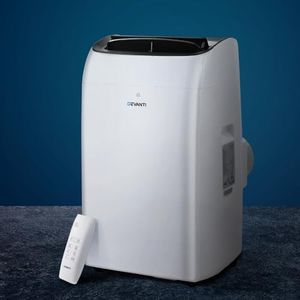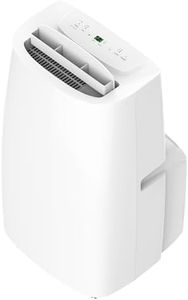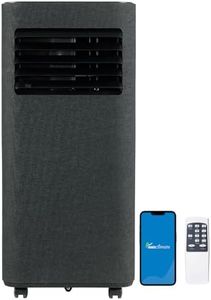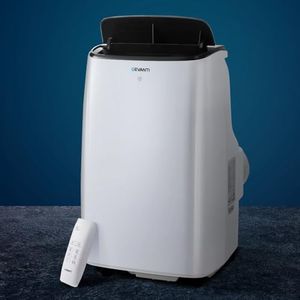We Use CookiesWe use cookies to enhance the security, performance,
functionality and for analytical and promotional activities. By continuing to browse this site you
are agreeing to our privacy policy
10 Best Portable Ac
From leading brands and best sellers available on the web.Buying Guide for the Best Portable Ac
Choosing a portable AC (air conditioner) can feel overwhelming because there are many options and features to consider. The right model for you will help keep your space comfortable, be easy to use, and fit the environment where you plan to use it. Think about the size of the area you want to cool, where you’ll put the unit, how often you’ll move it, and which functions are important for your lifestyle. Understanding the key features will help you make a smart and satisfying choice.Cooling Capacity (BTU)BTU stands for British Thermal Units and measures how much heat the AC can remove from a room per hour. This is the most important factor to evaluate because it determines the actual cooling power. Portable ACs usually range from about 8,000 to 14,000 BTUs. To navigate this spec, smaller BTUs (around 8,000) are best for small bedrooms or offices, mid-range units (10,000–12,000 BTUs) suit medium rooms, and larger units (12,000–14,000 BTUs) are great for bigger living rooms or open spaces. To pick the right one, measure the square footage of your room and look for a BTU rating that matches. Choosing a unit with too much power for a small room may lead to inefficient cycling, while too little BTU for a large room won’t cool well.
Room Size CompatibilityMany portable ACs list the maximum room size they can effectively cool, usually in square feet or square meters. This is important because a unit that’s too small for your space won’t lower the temperature enough, while a unit that’s too big may use more energy than needed. If you have a small bedroom, choose a model designed for smaller spaces, whereas open-plan rooms or large areas will need a unit built to handle larger sizes. Match the product recommendation to your room’s measurements for the best experience.
Energy Efficiency (EER / CEER)EER (Energy Efficiency Ratio) or CEER (Combined Energy Efficiency Ratio) tells you how efficiently the portable AC uses electricity to cool a room. Higher numbers indicate better efficiency and lower operating costs. EER values typically range from about 8 to 12 or higher. If you plan to run the AC often or for long periods, look for a higher efficiency rating to save on electricity. Occasional users in mild climates may not need to prioritize this as much.
Noise Level (dB)Noise level, measured in decibels (dB), tells you how loud the AC will be during operation. Some portable ACs can be quite noisy, while others are designed for quieter performance. Lower numbers mean quieter units. Values can range from about 50 to 60 dB for most models. If you’re planning to use the AC in a bedroom, office, or a space where quiet is important, look for a lower noise rating. In busy or already noisy areas, this may be less critical.
Portability and SizePortable ACs come in different sizes and with varying features for moving the unit, such as wheels or handles. Portability is important if you plan to move the AC between rooms or store it away when not in use. Compact and lightweight units are easier to move but may have lower cooling capacity. Larger units cool bigger spaces but are bulkier. Consider where you’ll use and store the AC, and choose a model that fits your mobility needs.
Ventilation and Window KitAll portable ACs need to vent hot air outside, usually through a window. The included window kit helps you set this up. Check how easy the vent system is to use and if it will fit your window type (horizontal or vertical sliders most common). If your windows are an unusual shape or size, or you want to vent through a wall or door, make sure the kit is adaptable. Pick a unit with a venting system that fits your space and is easy for you to install and manage.
Drainage OptionsAs the AC cools, it also removes moisture from the air, which collects in a tank or evaporates automatically. Some models require you to empty a tank regularly, while others use self-evaporating technology to reduce or eliminate this task. If you prefer low maintenance, choose a unit with automatic evaporation, but if high humidity is a concern, check how large the water tank is and how easy it is to drain. Consider your local climate and how much effort you want to put into upkeep.
Additional Features (Modes, Timers, Remote Control)Portable ACs may come with additional features like a remote control, programmable timer, sleep mode, fan-only settings, or dehumidifier function. These extras can make operation easier and improve comfort. For example, a timer can help you save energy by turning off the AC automatically, and a remote is convenient for making adjustments from a distance. Think about which features would make your experience easier or more pleasant, and choose a model that offers those.
